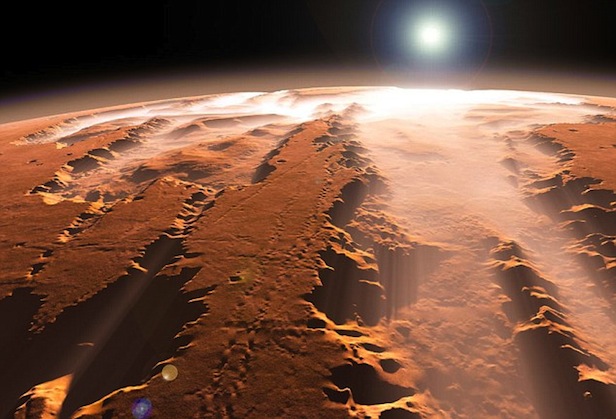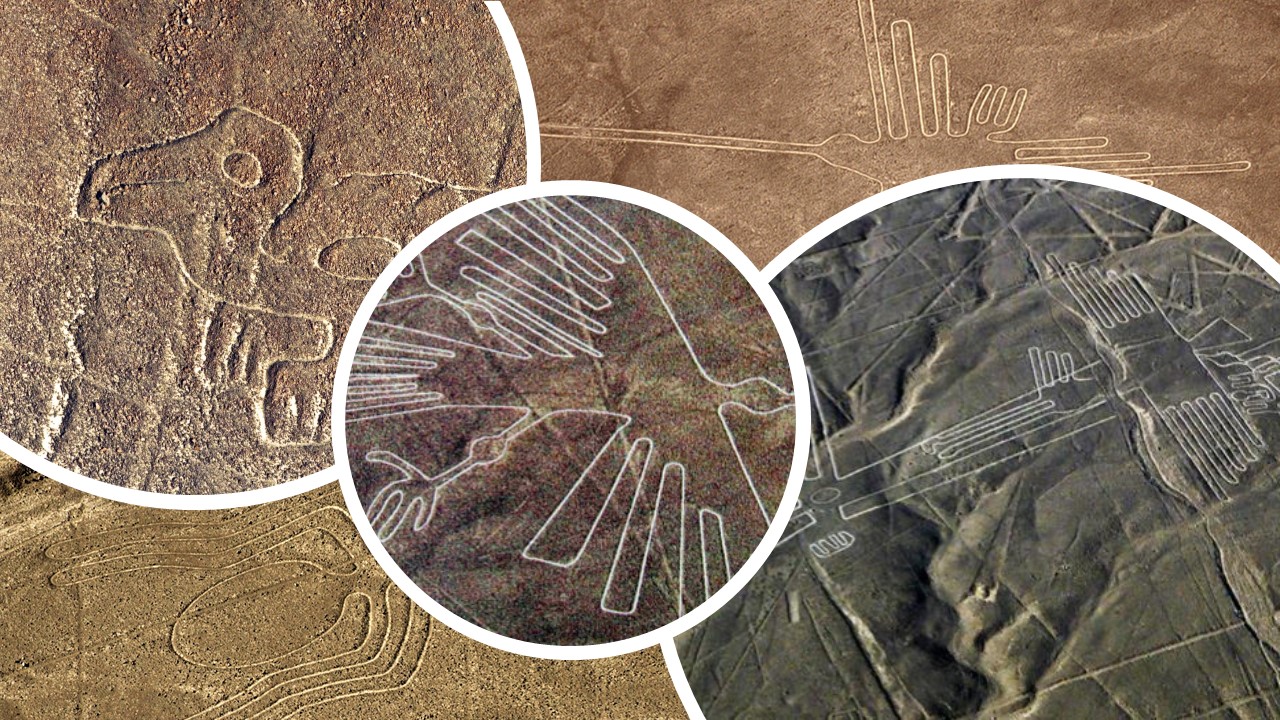Yes, aliens do exist: 10 Signs that we are not alone
A few years back we ran a poll to find out what our visitors think about the possibility of life on another planet.
The results were as follows:
Yes, aliens exist - 64,1%
It's highly likely - 25,6%
No, it's all fiction: 7,7%
In this article, Africa InTouch News journalist, Naomi Roebert, explores 10 signs - proving that we are not alone in The Universe!
Our fascination with the universe has been a part of the human consciousness since the dawn of early civilization, when gazing upon the immense celestial dome that encapsulates our relatively small existence we pondered both the scope, and the meaning, of those vast starlit reaches.
Human nature is defined by curiosity, and by the need to relate our own self-awareness to the immensity of the multiple galaxies and myriad planetary systems that constitute the unmapped mysteries of the universe. The totality of which cannot be measured by any modern technology.
As we continue to study with fascination the many subtleties and complexities of conscious life on our home planet, from the coding of information inherent in our DNA to our evolving understanding of the interactions between various species, it seems more impossible to imagine that ours is the only planet in the vastness of the universe that should carry such a wealth of life.
Video: Ellen Stofan, chief scientist of NASA.
Turning our ever-roving and exploratory gaze to the scintillating silent world that exists beyond our own, scientists have been doing some fascinating research as they attempt to find the answer to the age-old question – are we alone?
A particularly beautiful and poetic attempt at establishing a connection with potential alien life was the launching of the Voyager Golden Record, two phonographic records that were included aboard both Voyager space crafts launched in 1977.

The purpose of these records was to provide a form of communication, in the event that the space crafts encountered other conscious life forms in space, and to give these beings a first introduction, as it were, to their friends on earth.
The records included 15 images and a variety of natural sounds, such as those made by surf, wind, thunder and animals, as well as musical selections featuring works by composers such as J.S. Bach (interpreted by Glenn Gould), Mozart, Beethoven and Stravinsky.
The Voyager 1 entered interstellar space in 2013, and while no response has been noted from other life forms as of yet, the journey undertaken by scientists to discover alien life has led to some fascinating discoveries of signs that we are not alone. Here, we explore ten of them.
-
The mysterious radio signal received by the SETI Project
The Search of Extra-terrestrial Intelligence, referred to as the SETI project, is the collective term used to describe the scientific search for alien life by monitoring electromagnetic radiation for signs of transmissions from civilizations on other planets.
Marc Defant is a professor of geochemistry at USF.
In 2003, astronomers working on the project detected a signal on the massive telescope based in Puerto Rico to examine 200 sections of the galaxy.
The signal originated from an area between the constellations of Pisces and Aries where there were no detectable stars or planets.

Then, in 2018, astronomers pointed the telescope in the direction of the Ross 128, a massive red dwarf in the equatorial zodiac constellation of Virgo, and detected a wide-band radio signal.
According to the SETI Institute, ‘this signal not only repeated with time, but also slid down the radio dial, somewhat like a trombone going from a higher note to a lower one’, which much resembled interference from an artificial source not connected to flares from the star.
-
The ‘Wow!’ Signal
In 1977 a strange anomaly occurred when Ohio State’s Big Ear radio telescope detected a 72-second burst of sound that carried signs of having come from interstellar space, which could be in indication of extra-terrestrial communication.
The astronomer who discovered it was so excited that he scribbled a huge ‘Wow!’ on his printout.
Measuring at 1,420 megahertz, it matches a radio emission considered ideal of intergalactic messages.
While many astronomers have attempted to explain the origins of this mysterious message, from a secret spy signal to an unidentified passing comet, no one has been able to conclusively determine where it came from.
-
Equations that suggest our galaxy may contain thousands of life bearing planets
The Kepler space telescope has returned the fascinating finding that there are more planets than there are stars, and at least a quarter are Earth-size planets in their star’s so-called habitable zone, where conditions are neither too hot nor too cold for life.
Taking into account that there are at least 100 billion stars in the Milky Way alone, this means that there are 25 billion locations where life could take hold in our galaxy.
This is particularly awe-inspiring when considering that our galaxy is only one among trillions of galaxies.
-
Evidence of life on Mars
So, the Kepler space telescope has identified the multitude of planets on which life could take hold, but what evidence is there that has in fact occurred? Is the galaxy not just a barren waste land in which we alone have managed to emerge?
Well, in 1976 NASA’s Viking landers discovered chemical evidence of life in Martian soil samples. This production of radioactive methane indicated that something in the soil was metabolising the nutrients and producing radioactive gas.
-
Martian fossils discovered in a meteorite on Antarctica
Remains of a Martian meteorite were discovered in Antarctica in 1984, and in 1996 NASA scientists claimed to have found fossilized microbes of organic molecules and tiny specs of the mineral magnetite, sometimes found in Earth bacteria.
-
More methane found in the Martian atmosphere
Three independent groups in 2004 each found evidence of methane in the Martian atmosphere, using both earth-bound telescopes and the European Space Agency’s Mars Express orbiting space probe.

Methane in our own atmosphere is nearly always produced by bacteria and other life, and while it could be argued that the Martian methane was volcanic in origin, its existence was too recent to suggest this.
-
Chemical hints of possible microbes in the clouds of Venus
Elsewhere in the galaxy, researchers found hydrogen sulphide and sulphur dioxide in the Venetian clouds, which are not usually found to co-exist without some source which generates them.
Added to this, the presence of carbonyl sulphide was discovered, which is only produced by microbes or other catalysts and have not yet been found to be produced by any known inorganic process on earth.
-
Traces of sulphur found on Europa
Jupiter, the king of our galaxy, is orbited by a veritable harem of 79 moons, and in 2003 traces of sulphur on the Europa moon were hypothesised as a possible sign of alien life.
These compounds were discovered by the Galilea space probe, which also detected a warm ocean beneath the moon’s crust. The sulphur signatures resemble the same by-products of bacteria trapped in the surface of ice lakes in Antarctica.
It is possible that bacteria could be thriving in the volcanically warm ocean on Europa, much as they do on earth.
-
Clues in historical artworks
While most UFO sightings are dismissed as being the source of quacks and conspiracy theorists, many researches have turned to evidence of sightings in old artworks.
One of the most prominent of these is the ‘The Madonna with Saint Giovannino’ painting, which was created in the 15th century.

In this image of the Virgin Mary, the backdrop depicts a man with his dog staring up at the sky where a hovering disc-like object is seen, much resembling the many other depictions of UFO sightings in more recent history.
-
The Nazca lines of Peru
Another contentious, though compelling piece of supposed ancient evidence of previous alien visitors is the mysterious Nazca lines of Peru.
Located in the remote Peruvian desert, they consist of hundreds of ancient lines that depict the shapes of animals and other strange figures.

What is more intriguing is the fact that the images can only be viewed in their full perspective from a few hundred feet in the air, and yet these lines were drawn thousands of years before the invention of aviation.
Who, or what, were these ancient figure-drawers trying to signal from that distance on the earth’s surface? And for whose benefit were these strange pictures made?
Editor: Anchen Coetzee
Written by: Naomi Roebert
Yes, we do exist: Millennials choosing the platteland over city life
The forgotten ones: life in the platteland during lockdown
A look inside the magical, enigmatic and captivating mind of a procrastinator
What is narcissism and is there a cure?



